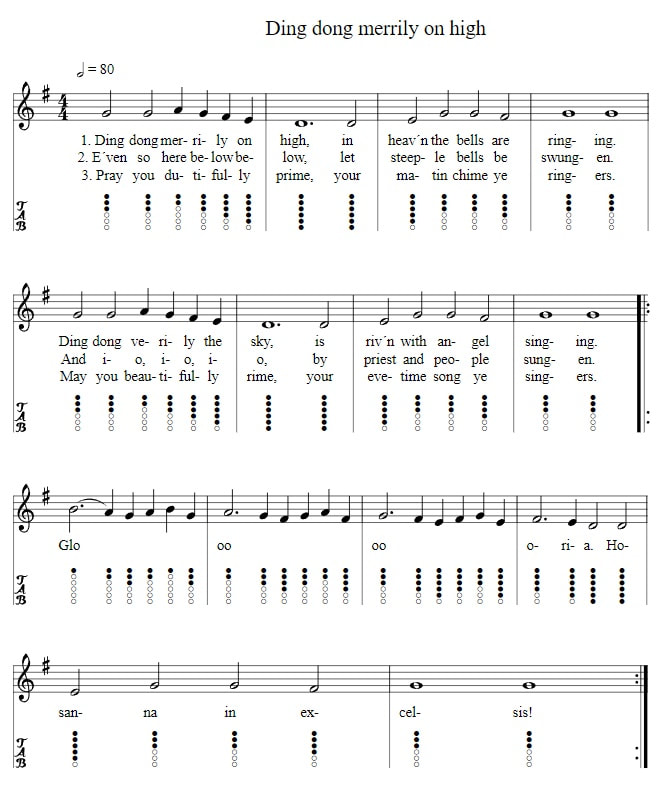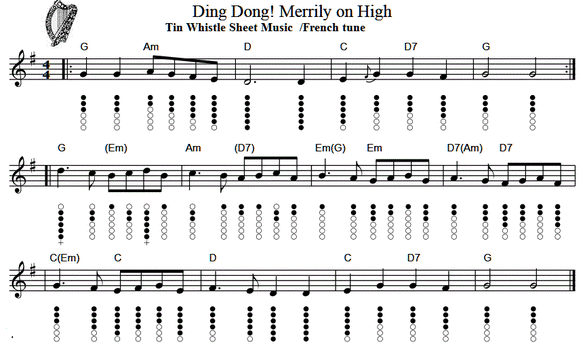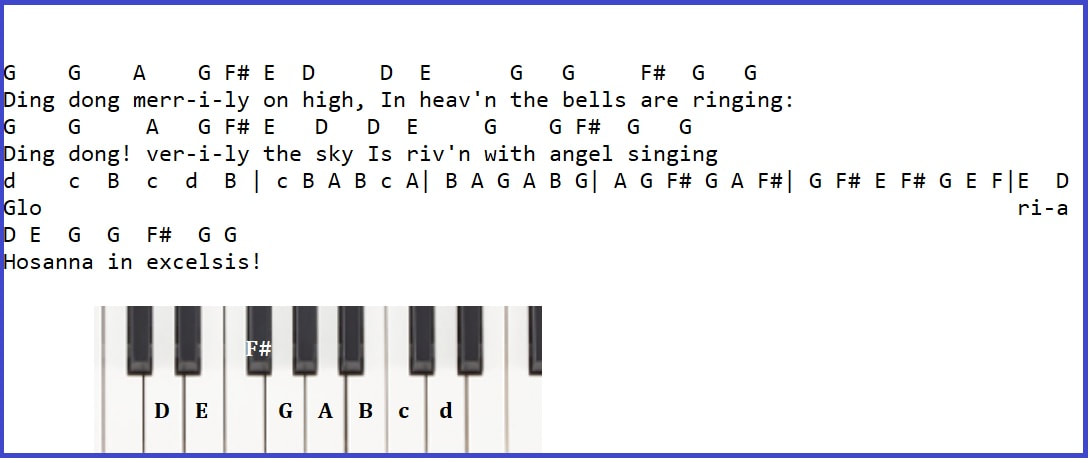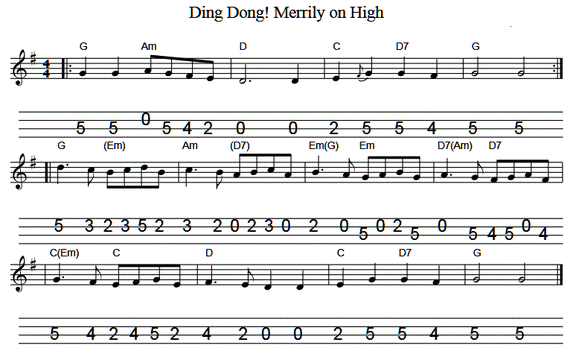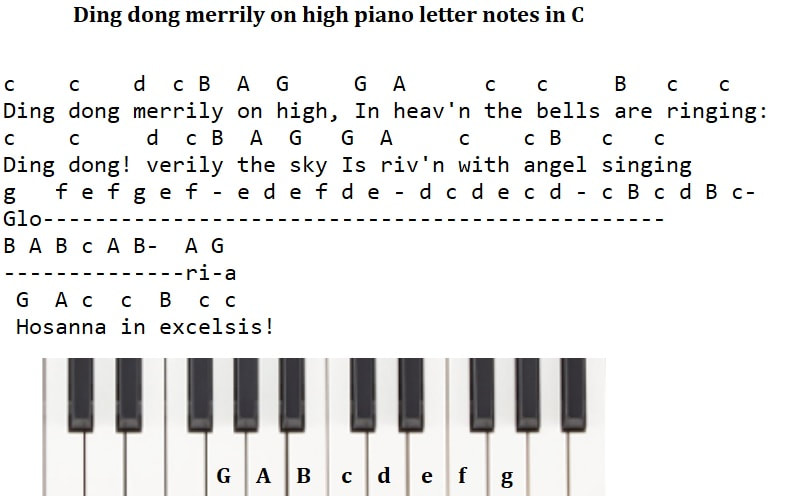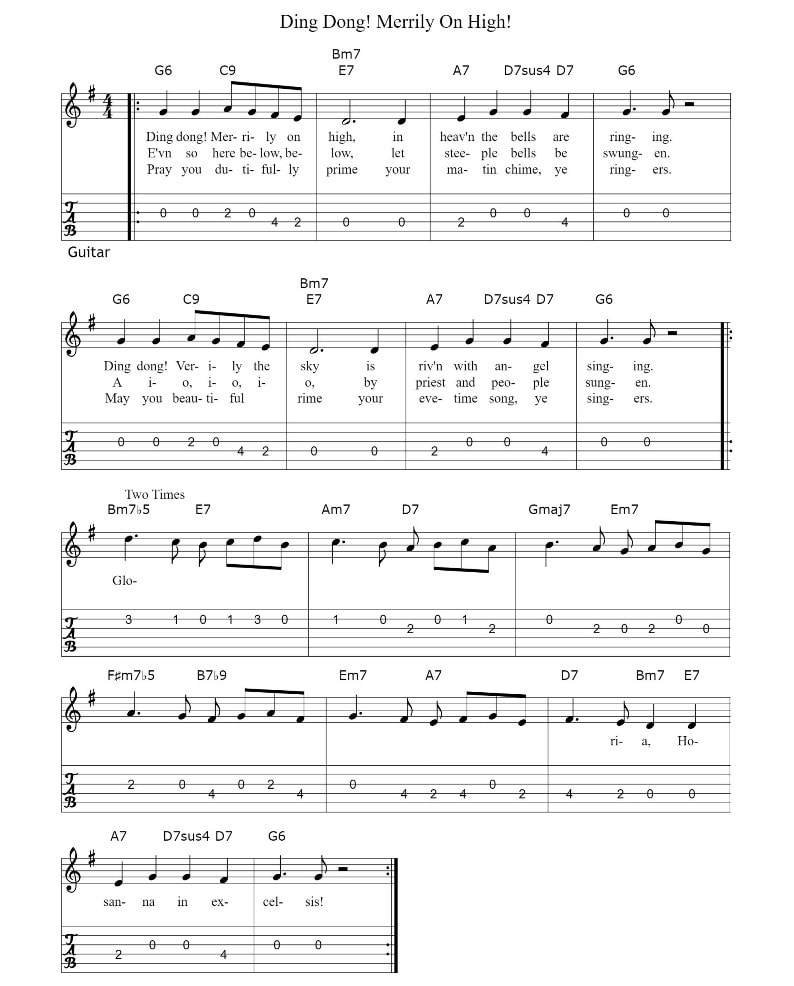Ding Dong Merrily On High Tin Whistle Sheet Music
And Banjo / Mandolin Tab. A Traditional Christmas Carol which started out in France in the 16th century. The piano keyboard / melodica letter notes are included in the key of G like the first piece of sheet music with the piano chords and another version in C. [ All white notes ]Ding dong merrily on high fingerstyle guitar tab and chords included.
: The Evolution of Christmas Music
Christmas music has been an integral part of the holiday season for centuries, with its festive tunes and lyrics bringing joy and warmth to people all around the world. From traditional carols to modern pop hits, the evolution of Christmas music has been a fascinating journey, reflecting the changing times and cultures of different eras. This thesis will explore the evolution of Christmas music, from its humble beginnings to its current form, and analyze the impact it has had on society.
The origins of Christmas music can be traced back to the Middle Ages, where Christmas carols were sung in churches as a way to celebrate the birth of Jesus Christ. These carols were usually religious in nature, with lyrics focusing on the biblical story of the Nativity, and were accompanied by simple melodies. One of the earliest Christmas carols, 'Ding Dong Merrily On High,' can be dated back to the 16th century, with its catchy tune and joyful lyrics embodying the essence of Christmas.
During the Renaissance period, Christmas music became more elaborate, with the addition of harmonies and polyphony. Composers such as Johann Sebastian Bach, George Frideric Handel, and Antonio Vivaldi created magnificent pieces of Christmas music, such as Handel's 'Messiah' and Bach's 'Christmas Oratorio.' These works of art elevated Christmas music to a new level, with their complex melodies and intricate harmonies, and are still widely performed and celebrated to this day.
In the 19th century, the commercialization of Christmas and the rise of popular culture led to the creation of new forms of Christmas music. This era saw the emergence of Christmas songs that were not necessarily religious, but focused more on the festive spirit of the holiday. One of the most iconic Christmas songs from this time is 'Jingle Bells,' written by James Pierpont in 1857, which has become a staple in Christmas celebrations around the world.
The early 20th century saw the birth of the modern Christmas music industry, with the rise of popular music and the advent of recording technology. This gave rise to a new genre of Christmas music – the Christmas pop song. Artists such as Bing Crosby, Nat King Cole, and Frank Sinatra released popular Christmas songs that are still beloved today, such as 'White Christmas,' 'The Christmas Song,' and 'Have Yourself a Merry Little Christmas.' These songs not only became holiday classics but also marked the beginning of the commercialization of Christmas music, with record labels and artists capitalizing on the growing demand for festive tunes.
The 1950s and 1960s saw the rise of rock and roll, which had a significant influence on Christmas music. Artists such as Elvis Presley, Chuck Berry, and Brenda Lee released popular Christmas songs, infusing their signature rock and roll sound into the holiday music genre. This era also saw the emergence of the Motown sound, with artists such as The Jackson 5, Stevie Wonder, and The Supremes releasing soulful and upbeat Christmas songs that became instant hits.
In the 1980s and 1990s, Christmas music continued to evolve, with the introduction of new styles such as synth-pop and rap. Artists like Wham!, Mariah Carey, and Run-DMC released Christmas songs that topped the charts and became holiday classics. This era also saw the rise of charity singles, with artists coming together to record songs for a good cause, such as Band Aid's 'Do They Know It's Christmas?' and USA for Africa's 'We Are the World.'
The 21st century has brought about a new wave of Christmas music, with artists from various genres putting their own spin on holiday classics and releasing original songs. The rise of streaming platforms and digital music has also made it easier for artists to release and promote their Christmas music, reaching a wider audience than ever before. This has led to a diverse range of Christmas music, from traditional carols to modern pop hits, catering to the different tastes of listeners.
In conclusion, the evolution of Christmas music has been a reflection of the changing times and cultures throughout history. From its religious origins to the commercialization of the holiday, from traditional carols to modern pop hits, Christmas music has evolved into a diverse and beloved genre. It has not only brought joy and warmth to people during the holiday season but also served as a reminder of the rich history and cultural traditions associated with Christmas. As long as there are celebrations of Christmas, there will always be new and innovative forms of Christmas music, keeping the holiday spirit alive for generations to come.
Christmas music has been an integral part of the holiday season for centuries, with its festive tunes and lyrics bringing joy and warmth to people all around the world. From traditional carols to modern pop hits, the evolution of Christmas music has been a fascinating journey, reflecting the changing times and cultures of different eras. This thesis will explore the evolution of Christmas music, from its humble beginnings to its current form, and analyze the impact it has had on society.
The origins of Christmas music can be traced back to the Middle Ages, where Christmas carols were sung in churches as a way to celebrate the birth of Jesus Christ. These carols were usually religious in nature, with lyrics focusing on the biblical story of the Nativity, and were accompanied by simple melodies. One of the earliest Christmas carols, 'Ding Dong Merrily On High,' can be dated back to the 16th century, with its catchy tune and joyful lyrics embodying the essence of Christmas.
During the Renaissance period, Christmas music became more elaborate, with the addition of harmonies and polyphony. Composers such as Johann Sebastian Bach, George Frideric Handel, and Antonio Vivaldi created magnificent pieces of Christmas music, such as Handel's 'Messiah' and Bach's 'Christmas Oratorio.' These works of art elevated Christmas music to a new level, with their complex melodies and intricate harmonies, and are still widely performed and celebrated to this day.
In the 19th century, the commercialization of Christmas and the rise of popular culture led to the creation of new forms of Christmas music. This era saw the emergence of Christmas songs that were not necessarily religious, but focused more on the festive spirit of the holiday. One of the most iconic Christmas songs from this time is 'Jingle Bells,' written by James Pierpont in 1857, which has become a staple in Christmas celebrations around the world.
The early 20th century saw the birth of the modern Christmas music industry, with the rise of popular music and the advent of recording technology. This gave rise to a new genre of Christmas music – the Christmas pop song. Artists such as Bing Crosby, Nat King Cole, and Frank Sinatra released popular Christmas songs that are still beloved today, such as 'White Christmas,' 'The Christmas Song,' and 'Have Yourself a Merry Little Christmas.' These songs not only became holiday classics but also marked the beginning of the commercialization of Christmas music, with record labels and artists capitalizing on the growing demand for festive tunes.
The 1950s and 1960s saw the rise of rock and roll, which had a significant influence on Christmas music. Artists such as Elvis Presley, Chuck Berry, and Brenda Lee released popular Christmas songs, infusing their signature rock and roll sound into the holiday music genre. This era also saw the emergence of the Motown sound, with artists such as The Jackson 5, Stevie Wonder, and The Supremes releasing soulful and upbeat Christmas songs that became instant hits.
In the 1980s and 1990s, Christmas music continued to evolve, with the introduction of new styles such as synth-pop and rap. Artists like Wham!, Mariah Carey, and Run-DMC released Christmas songs that topped the charts and became holiday classics. This era also saw the rise of charity singles, with artists coming together to record songs for a good cause, such as Band Aid's 'Do They Know It's Christmas?' and USA for Africa's 'We Are the World.'
The 21st century has brought about a new wave of Christmas music, with artists from various genres putting their own spin on holiday classics and releasing original songs. The rise of streaming platforms and digital music has also made it easier for artists to release and promote their Christmas music, reaching a wider audience than ever before. This has led to a diverse range of Christmas music, from traditional carols to modern pop hits, catering to the different tastes of listeners.
In conclusion, the evolution of Christmas music has been a reflection of the changing times and cultures throughout history. From its religious origins to the commercialization of the holiday, from traditional carols to modern pop hits, Christmas music has evolved into a diverse and beloved genre. It has not only brought joy and warmth to people during the holiday season but also served as a reminder of the rich history and cultural traditions associated with Christmas. As long as there are celebrations of Christmas, there will always be new and innovative forms of Christmas music, keeping the holiday spirit alive for generations to come.
Below is the melodica / piano keyboard letter notes for Ding Dong Merrily On High.
Ding dong merrily on high piano letter notes for the key of C. The below notes are different than the above sheet music.
